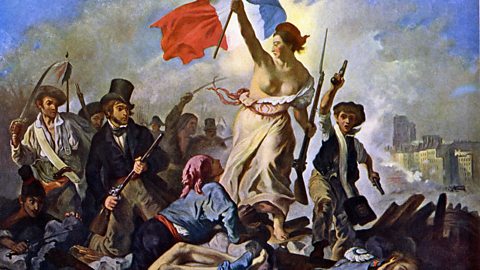The rise of Unionism
At first, Irish Catholics supported the Act of Union; however, events in the 19th Century such as the Great Famine and the Land Wars saw this support decreasing. By the end of the century Catholics were campaigning for 91ČČąŽ RuleThe idea that Ireland should have a parliament to look after local issues.
While Catholic support declined, there was many who wanted to keep the Union.
These people were known as Unionists:
- They disliked the idea of 91ČČąŽ Rule as they saw it as weakening the Union.
- By the time 91ČČąŽ Rule became a possibility, Unionism included most Irish Protestants, particularly those living in Ulster.
There were also pockets of Unionism throughout Ireland in the form of the landlords who had strong family ties to England and who did not want to lose this link. They led the campaign to stop 91ČČąŽ Rule in the 1880s. However, due to a government initiative in the 1890s, many of them sold their land and moved back to England. This led to Unionism being concentrated in the North East.
Why did Unionists oppose 91ČČąŽ Rule?
Unionists opposed 91ČČąŽ Rule due to:
- Their fear of the Catholic Church - due to their belief that the Church â which had supported EmancipationThe removal of restrictions on Catholic involvement in politics. After the introduction of the 1829 Catholic Emancipation Act, Catholics were able to sit in Parliament as MPs. and RepealRepeal means to reverse a law - in this case the Act of Union. - had a lot of control over Catholics who would simply do whatever the Pope and bishops told them.
- Their fear that a more powerful Church and a Catholic dominated 91ČČąŽ Rule Parliament might act against Protestants and prevent them from having freedom of religion.
It was against this backdrop the Orange OrderEstablished in Co. Armagh in 1795. The aim of the Orange Order was to maintain Protestant control in Ireland. experienced a revival.
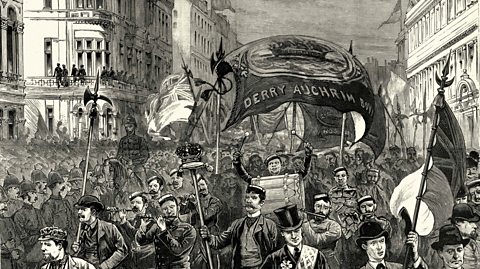
Prosperity and Unionism
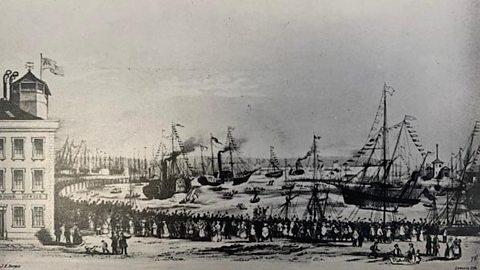
Many Presbyterians had supported the United IrishmenEstablished in 1791 and greatly influenced by the French Revolution, the aim of the United Irishmen was to ensure the removal of English control through a union of Catholics, Protestants and Dissenters (Presbyterians). in the 1790s, but their attitude changed during the 19th century.
One reason was that the ban on Presbyterians sitting in parliament was lifted with the 1828 repeal of the Test and Corporations ActAn Act of Parliament that had prevented Presbyterians from holding public office. .
The 19th century also saw a significant industrial boom in Belfast and the surrounding area. Linen manufacturing increased massively and, with 32 mills, the city was nicknamed Linenopolis.
In the late 1840s the development of a new deeper harbour - the Victoria Channel - meant that goods could be more easily transported in and out of Belfast. As a result Belfast continued to develop as a port.
The city also saw a growth in its shipping industry, most famously with the shipbuilders Harland and Wolff.
Many Protestants believed that Belfastâs increasing prosperity was due to the Union with Britain, the worldâs largest empire and then at the height of its trading power.
For many, therefore, breaking the Union was too great a risk to take.

Possible problems in Belfast

Huge numbers moved from the countryside to Belfast for work. In 1800 its population was under 30,000; by 1850 it was 100,000. It would almost quadruple again in the next 50 years.
Many of these people shared a sectarian rivalry which, on occasion, had previously been violent. They now lived closely together in industrial Belfastâs tight knit streets. Many Protestant workers saw support for Unionism as part of their ongoing feud with Catholics. The same could be said of Catholics and their support for 91ČČąŽ Rule.

More on Religious conflict in Ireland
Find out more by working through a topic
- count5 of 6
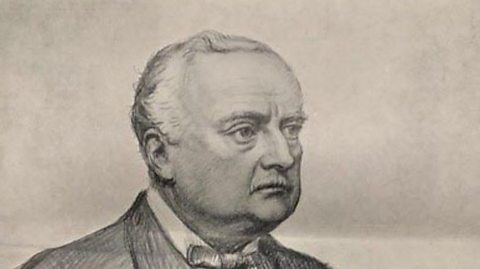
- count6 of 6
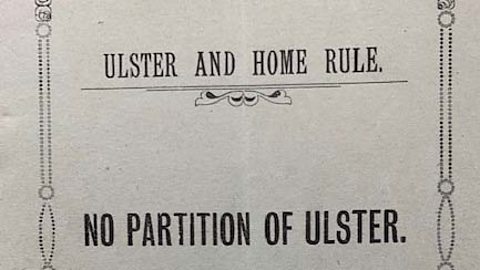
- count1 of 6

- count2 of 6
